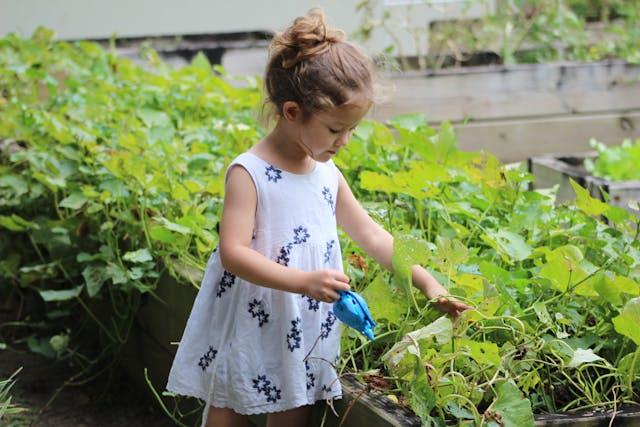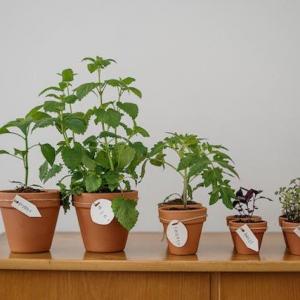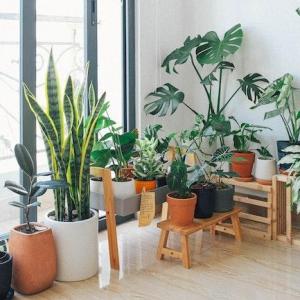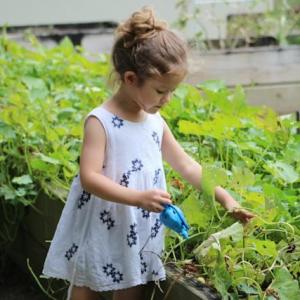

1. Planting Seeds of Curiosity:
Create a Kid-Friendly Garden Bed:
Set aside a section of your garden just for the little ones. Make raised beds or containers at their height and use kid-sized, colorful gardening tools. This fosters a sense of responsibility and ownership while also making gardening more approachable.Choose Quick-Growing Seeds:
Select seeds with rapid germination and growth. Excellent options are cherry tomatoes, radishes, and sunflowers. Young gardeners can maintain their excitement due to the rapid growth, which gives them an instant sense of accomplishment.
2. Learning About Life Cycles:
Seed to Plant Journals:
Kids should be encouraged to maintain a seed-to-plant journal. Ask them to record every phase of a plant's life cycle, from seed planting to harvesting. This practical method provides a tangible way to teach the concept of life cycles while also improving observation skills.
Butterfly and Bee-Friendly Plants:
Select plants for your garden that will draw bees and butterflies. Use lavender, marigolds, and zinnias among your flower arrangements. This gives the garden a splash of color while also offering a chance to educate oneself on pollination and the important role these insects play in the natural world.3. Sensory Exploration:
Touch and Feel Garden:
Plant a variety of textures to create a sensory garden. Add velvety sage, prickly succulents, and soft lamb's ear. Kids can develop their vocabulary and sensory awareness by exploring different plants and describing how they feel.Aromatic Herb Garden:
Create a fragrant herb garden with plants like rosemary, mint, and basil. Encourage kids to explore their sense of smell as they discover various fragrances and discover the culinary applications of herbs. This practical experience establishes the link between gardening and daily life.4. Creative DIY Garden Projects:
Painted Rock Markers:
Utilize DIY rock markers to foster creativity. Use brightly colored paint on rocks to identify various plants. This gives the garden a unique touch while strengthening identification skills for plants.Upcycled Container Planting:
Repurpose everyday objects as planters to promote sustainability. You can create whimsical and one-of-a-kind planters out of old teacups, tin cans, or even worn-out rain boots. Children can learn about recycling and creative resourcefulness through this activity.5. Wildlife Spotting and Birdwatching:
Build a Bird Feeder:
Use repurposed materials to create a basic bird feeder. Keep an eye on the various bird species that visit your garden by hanging it there. By introducing children to the world of birdwatching, this activity cultivates an appreciation for the variety of wildlife that can be found in gardens.Bug Hunt Adventures:
Venture out on bug-hunting adventures. Give children a magnifying glass and encourage them to study insects in their native environment. Talk about how bugs fit into the ecosystem of your garden and emphasize how vital they are to keeping things healthy.6. Educational Garden Games:
Plant Bingo:
Make a bingo game out of the plants in your garden, called Plant Bingo. Children play a fun and instructive game as they recognize and mark off each plant, which helps them reinforce plant recognition.Garden Scavenger Hunt:
Create a scavenger hunt in your garden with clues that are connected to various garden elements. Through problem-solving techniques and exploration, this activity transforms the garden into an engaging learning environment.Conclusion
Growing a garden with children is more than just sowing seeds; it develops a love of learning and a complete connection to the natural world. For young minds, gardening offers a rich educational tapestry through practical experiences, sensory exploration, and creative projects. Children not only acquire green thumbs but also priceless life skills like patience, responsibility, and a profound respect for the environment as they witness their efforts blossom and thrive. With your little green thumbs, let's grow, explore, and have endless fun!So grab those gardening gloves and embrace the joy of muddy hands. With every lovingly tended plant in the garden, memories bloom and futures are nurtured.
Article
All 1 Comments


Madre 3000
04-08
0
Quiero ayudar el Medio ambiente
Elite Article













